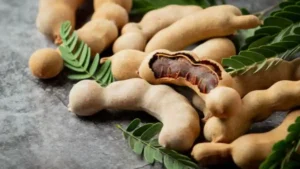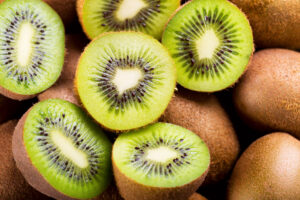How to Grow and Care for Star Fruit (Carambola): Complete Guide
Star fruit, also known as carambola (Averrhoa carambola), is a tropical fruit treasured for its unique star-shaped appearance when sliced and its refreshing sweet-tart flavor. While native to Southeast Asia, star fruit trees can thrive in the warm regions of the United States, particularly in USDA hardiness zones 9-11, which include parts of Florida, Hawaii, and southern California. This comprehensive guide will walk you through everything you need to know about growing and caring for star fruit in your home garden, whether in the ground, in containers, or starting from seed.
Understanding Star Fruit Basics
Before diving into cultivation techniques, it’s essential to understand what makes star fruit unique and what conditions it requires to flourish.
What Is Star Fruit?
Star fruit is an exotic tropical fruit that grows on the carambola tree, which can reach heights of 20-30 feet when mature. The fruit itself is oval-shaped with 5-6 prominent ridges running lengthwise, giving it its characteristic star appearance when cut crosswise.
Star fruit comes in two main varieties:
- Sweet types: Less acidic with higher sugar content
- Sour types: More acidic and often used in cooking
According to the USDA Agricultural Research Service, star fruit is not only delicious but also nutritionally beneficial, containing significant amounts of vitamin C, antioxidants, and fiber while being low in calories.

Climate Requirements for Star Fruit
Star fruit trees are tropical by nature and require specific conditions to thrive:
| Requirement | Optimal Conditions | Notes |
|---|---|---|
| Temperature | 68-95°F (20-35°C) | Cannot tolerate frost |
| Hardiness Zone | USDA Zones 9-11 | Marginal in Zone 9b |
| Humidity | High (60-80%) | Prefers humid environments |
| Sun Exposure | Full sun to partial shade | Minimum 6 hours of direct sunlight |
| Wind Tolerance | Low | Needs protection from strong winds |
Growing Star Fruit Trees in Your Garden
If you live in a suitable climate, growing star fruit in your garden can be a rewarding experience that provides years of beautiful foliage and delicious harvests.
Selecting the Right Location
When choosing where to plant your star fruit tree, consider these factors:
- Sun exposure: Select a spot that receives at least 6-8 hours of direct sunlight daily.
- Wind protection: Plant your tree where it’s protected from strong winds that can damage branches and cause fruit drop.
- Drainage: Ensure the area has excellent drainage, as star fruit trees can’t tolerate waterlogged soil.
- Space: Allow at least 15-20 feet of space in all directions, as mature trees can spread significantly.
Soil Requirements
Star fruit trees are somewhat adaptable but perform best in specific soil conditions:
- Soil type: Well-draining, sandy loam soil
- pH level: Slightly acidic to neutral (pH 5.5-7.0)
- Organic matter: Enrich with compost before planting
Planting Instructions
The best time to plant star fruit trees is in spring after all danger of frost has passed. Follow these steps:
- Dig a hole twice as wide and as deep as the root ball.
- Mix the removed soil with compost at a 2:1 ratio.
- Remove the tree from its container, gently loosen the roots if pot-bound.
- Place the tree in the hole so that the top of the root ball is level with or slightly above the surrounding soil.
- Backfill with the soil-compost mixture, tamping gently to remove air pockets.
- Create a basin around the tree for efficient watering.
- Water thoroughly and apply 2-3 inches of mulch, keeping it a few inches away from the trunk.
Growing Star Fruit in Containers
If you don’t live in zones 9-11 or have limited space, growing star fruit in containers allows you to move plants indoors during colder months and manage their size.
Container Selection
Choose a container that:
- Is at least 15-20 gallons in size
- Has multiple drainage holes
- Is made of a durable material like plastic or ceramic
Remember that you’ll need to repot your tree every 2-3 years as it grows.
Potting Mix
Create a suitable potting mix by combining:
- 60% high-quality potting soil
- 20% perlite or pumice (for drainage)
- 20% compost or well-rotted manure
Container Care Instructions
- Watering: Container plants dry out faster than in-ground trees. Check moisture levels frequently and water when the top 1-2 inches of soil feels dry.
- Fertilization: Feed container-grown star fruit trees monthly during the growing season with a balanced fertilizer formulated for citrus or tropical fruits.
- Pruning: Maintain a manageable size through regular pruning, focusing on keeping the tree at 8-10 feet tall in containers.
- Winter protection: If temperatures drop below 50°F (10°C), move containerized trees indoors to a bright location until spring.
Growing Star Fruit from Seed
While most commercial growers propagate star fruit through grafting or cuttings to ensure consistent fruit quality, growing from seed can be an enjoyable project—though be aware that the resulting tree may not produce fruit identical to its parent.
Seed Collection and Preparation
- Select ripe fruit from a healthy, productive tree.
- Extract seeds and rinse thoroughly to remove all pulp.
- Plant immediately, as star fruit seeds lose viability quickly when dried.
Germination Process
- Fill a 4-inch pot with seed-starting mix.
- Plant seeds 1/2 inch deep.
- Water gently but thoroughly.
- Cover with plastic to maintain humidity.
- Place in a warm area (75-85°F/24-29°C).
- Germination typically occurs within 1-3 weeks.
Seedling Care
- Once seedlings reach 3-4 inches tall, transplant to individual 1-gallon containers.
- Provide bright, indirect light.
- Maintain consistent moisture without overwatering.
- Begin fertilizing with a half-strength, balanced fertilizer after the first month.
- Gradually acclimate seedlings to direct sunlight.
Keep in mind that seed-grown trees may take 7-9 years to bear fruit, compared to 3-4 years for grafted trees.
Ongoing Care for Star Fruit Trees
Watering Requirements
Proper watering is crucial for star fruit tree health and productivity:
- Young trees: Water 2-3 times per week during the first year.
- Established trees: Water deeply once weekly during dry periods.
- Signs of overwatering: Yellowing leaves, wilting despite wet soil.
- Signs of underwatering: Leaf curl, premature fruit drop.
According to the University of Florida Extension, adjusting watering based on seasonal rainfall is essential for preventing root diseases while ensuring adequate moisture.
Fertilization Schedule
Star fruit trees require regular feeding to produce abundant, high-quality fruit:
| Tree Age | Fertilizer Type | Application Rate | Frequency |
|---|---|---|---|
| 1st year | 8-3-9 or 6-6-6 with micronutrients | 1/4 lb per application | Every 60 days |
| 2nd year | 8-3-9 or 6-6-6 with micronutrients | 1/2 lb per application | Every 60 days |
| 3rd year | 8-3-9 or 6-6-6 with micronutrients | 3/4 lb per application | Every 90 days |
| Mature trees | 8-3-9 or 6-6-6 with micronutrients | 1-2 lbs per application | 3-4 times per year |
Apply fertilizer evenly around the drip line of the tree and water thoroughly afterward.
Pruning Techniques
Pruning is important for maintaining tree health, shape, and productivity:
- Formative pruning: During the first 2-3 years, establish a strong central leader with 3-5 well-spaced scaffold branches.
- Maintenance pruning: Remove dead, diseased, or crossing branches annually.
- Height control: Keep trees at a manageable height (12-15 feet) for easier harvesting.
- Timing: Prune after harvest or in early spring before new growth emerges.

Pest and Disease Management
While generally hardy, star fruit trees can face several challenges:
Common Pests:
- Scale insects
- Fruit flies
- Birds
Prevention and Control:
- Maintain good sanitation by removing fallen fruit
- Use organic insecticidal soaps for scale
- Consider bird netting during fruiting season
Common Diseases:
- Root rot (from overwatering)
- Anthracnose
- Leaf spot
Prevention and Control:
- Ensure proper drainage
- Apply copper-based fungicides when necessary
- Prune to improve air circulation
Harvesting and Using Star Fruit
When to Harvest
Star fruit typically produces two main crops per year in the US, with some continuous production in between. Fruits are ready to harvest when:
- The fruit has developed its full yellow color (some varieties maintain green ribs)
- The waxy bloom on the skin begins to fade
- The fruit yields slightly to gentle pressure
For sweeter fruit, allow it to ripen fully on the tree. For shipping or storage, harvest when the fruit is mature but still firm.
Harvesting Techniques
- Cut the fruit with pruning shears, leaving a small portion of stem attached.
- Handle gently to prevent bruising.
- Harvest in the morning when temperatures are cooler.
- Wear gloves if your skin is sensitive to the fruit’s oxalic acid.
Storage Tips
- Store at room temperature until fully ripe.
- Once ripe, refrigerate for up to one week.
- For longer storage, slice and freeze for up to six months.
Culinary Uses
Star fruit’s versatility makes it perfect for numerous culinary applications:
- Fresh consumption: Simply slice crosswise to reveal the star shape and enjoy.
- Salads: Add to fruit or green salads for color and flavor.
- Beverages: Juice or add to smoothies and cocktails.
- Preserves: Make star fruit jam, jelly, or chutney.
- Desserts: Use as a decorative and flavorful garnish for cakes and pastries.
- Cooking: In some Asian cuisines, particularly sour varieties are used in savory dishes.

Challenges of Growing Star Fruit in the US
While star fruit can thrive in parts of the United States, growers face several challenges:
- Limited growing regions: Commercial production is largely limited to South Florida and Hawaii.
- Cold sensitivity: Even brief exposure to temperatures below 30°F (-1°C) can damage or kill trees.
- Market competition: Imported star fruit from tropical countries often has lower production costs.
- Awareness: Despite growing popularity, many American consumers are still unfamiliar with star fruit.
However, with the increasing interest in exotic fruits and local food production, the USDA National Institute of Food and Agriculture reports growing opportunities for specialty fruit production in appropriate US regions.
Tips for Success
- Start with grafted trees if fruit production is your primary goal.
- Consider dwarf varieties for container growing.
- Protect young trees from cold snaps with frost cloth or outdoor heaters.
- Monitor soil moisture carefully—star fruit trees dislike both drought and waterlogged conditions.
- Be patient—even grafted trees take several years to reach full production.
Conclusion
Growing star fruit can be a rewarding addition to your garden if you live in a suitable climate or are willing to grow them in containers with winter protection. With proper care, a star fruit tree can provide decades of ornamental value and delicious, nutritious fruit that’s still considered exotic in many parts of the United States.
Whether you’re an experienced gardener looking to try something new or a fruit enthusiast eager to grow your own tropical treasures, star fruit offers a unique growing experience and a delicious reward for your efforts. By following the guidelines in this article, you’ll be well on your way to successfully growing and enjoying this distinctive tropical fruit in your own backyard.






